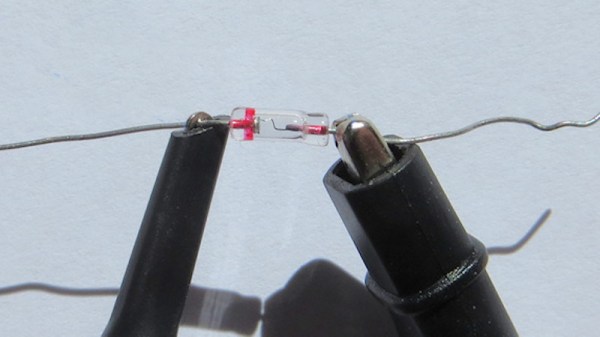We are used to microwave receivers requiring complex chipsets and exacting PCB layouts, but as [CHZ-soft] has shown, it does not always have to be that way. With nothing more complex than a germanium point-contact diode and an oscilloscope, you can quickly, easily, and cheaply resolve microwave signals, as we are shown with a 2.4GHz wireless mouse.
Of course, there’s nothing new here, what we’re being shown is the very simplest incarnation of a crystal set. It’s a wideband device, with only the length of the wires providing any sort of resonance, but surprisingly with the addition of a very selective cavity resonator it can be turned into a useful receiver. Perhaps the most interesting take-away is that the germanium point-contact diode — once a ubiquitous component — has almost entirely disappeared. In most applications it has been supplanted by the Schottky diode, but even those usually don’t quite possess the speed in the point contact’s home ground of radio detection. This is a shame, because there are still some bench-level projects for which they are rather useful.
So if you have a point contact diode and AM radio doesn’t attract, give it a go as a microwave detector. And if the point contact diode has attracted your interest then you may want to read our piece on Rufus Turner, who brought us its archetype, the 1N34A.
Via Hacker News.











